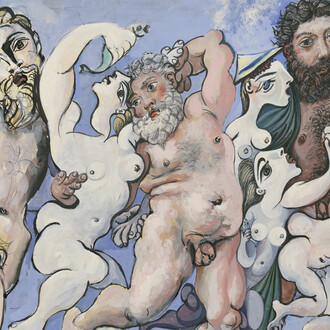It is always difficult to narrow down fundamental ideas. Their common use, the way in which we think we are clear about their meaning and the natural way in which we relate to them prevent us from approaching it from an analytical way, from stopping to dissect their interiors. What is reality? What is truth or objective? When do we act justly? By what standards do we measure a democracy? In reality, it is not easy to explain matters of such importance. Above all, because an essential part of what defines them has to do with great agreements between people. Seen up close, they are concerted or imposed creations, a type of malleable fiction that serves to determine the vital framework of a community in a place and a time. Human beings function by simulating possibilities, by setting rules. Borders, banknotes, the alphabet or a constitution are nothing more than inventions, ways of reaching an agreement. Maintaining that pact makes a society work. Accepting the rules allows us to be part of it, to understand each other. Times change, collectivities evolve and inevitably these alliances are adjusted because an infinite number of factors influence them, from technological to economic.
Logically, images are not alien to these implied agreements. We trust that they are part of a solid tradition and we assume that we know what we see, but they are a fallacy, perhaps the worst of all: their immediacy in the eyes makes us trust even more when we have them in front of us. “See to believe", says the popular Spanish saying. Convictions are a refuge, we don't care if they are correct or not. Prejudices allow us to be absolutely sure of what we do not know and that, although false, is reassuring. The photographic work of María María Acha-Kutscher (Lima, Peru, 1968) subtly revisits a central nucleus of conventionalisms linked to the feminine and femininity. Her research is silent, not strident, she dedicates herself to a meticulous collection of images taken from various sources (old books, posters, advertisements, albums, magazines, Internet...) which she then organizes on her computer by categories. Her digital collages are born from that living archive where the concepts to be re-examined are in constant circulation.
It is relevant to note that her growth and maturity as an artist develops in parallel to the confluence of two global situations that we have experienced in recent decades, especially since 2005. On one hand, the advances of the feminist movement generated by the fourth wave; on the other, the consolidation of the Internet, social networks and smartphones. These two transcendental circumstances, one linked to women's equality and the other to the way in which we relate to images today, determine a new era where it is necessary to ask ourselves about the construction of our cultural identity to understand where we come from and where we are going as a society. Its positioning reconfigures clichés to put us in front of the mirror of apparently innocuous visual messages that we take for granted. In fact, her work enhances a slow processing intelligence that has nothing to do with the despotism to which the daily gaze of scrolling, as fast as it is empty, subjects us.
For this exhibition, a significant part of the Womankind (2010) project, which began in 2010, has been selected, to which have been added her latest colour series linked to female aging and a specific piece such as La rabbia di Proserpina (2022) that responds to two gender visions: on one hand, the complaint of the normalization of violence against women within the History of Art; and on the other, the courage in the face of adversity as an engine of change in the feminist imaginary. Together, the works in this exhibition allow us an unquestionable overview of her evolution as an author, someone who, from her condition as a chronicler of the present, strives to provide a different reading of gender issues that overcomes any assumed role of passivity and disapproves of the assumption of a vicarious role.
María María's work rebels against the way in which the lives of women in the twentieth century have been told from a hegemonic paternalistic story, an attitude of power that has served to relegate them to a friendly and helpful background, usually as a model, secretary, stewardess, housewife, mother and wife. The woman's body has been objectified for centuries by the male gaze, which has marked superiority and placed women at the service of men. In her production, the artist re-signifies the images so that they take on a new life, highlighting in her careful compositions above all human beings who transmit a private world that is based on their own experiences and is not governed by stereotypes. Acha Kutscher rescues and remakes a parallel female historical memory that seeks to reflect everything from the complexity of their intimacy to their political struggles.
(Text by Sema D’Acosta)













![Saul Steinberg, The museum [El museo] (detalle), 1972. Cortesía del Museo de Arte Abstracto Español](http://media.meer.com/attachments/dfbad16c22c5940b5ce7463468ac8879f3b4bf23/store/fill/330/330/042ecf3bcd2c9b4db7ddbc57cb32e950c095835f7b5cd55b6e1576a6e78c/Saul-Steinberg-The-museum-El-museo-detalle-1972-Cortesia-del-Museo-de-Arte-Abstracto-Espanol.jpg)


